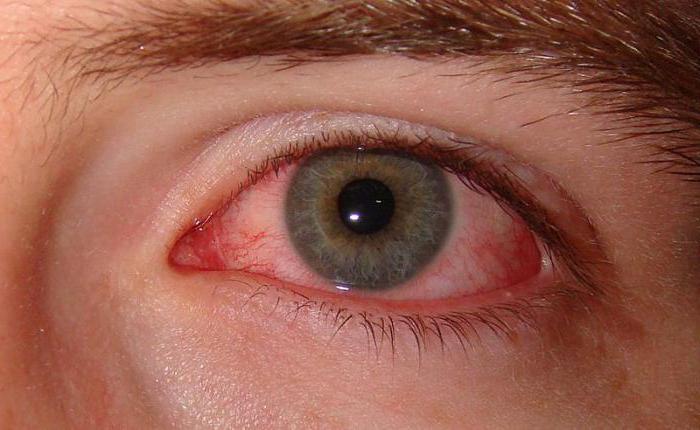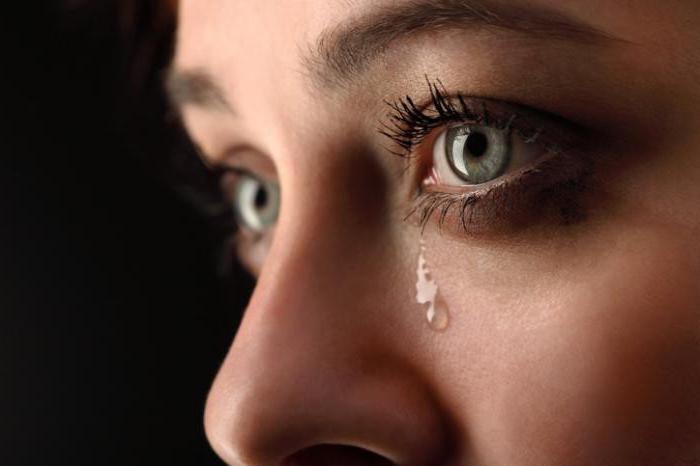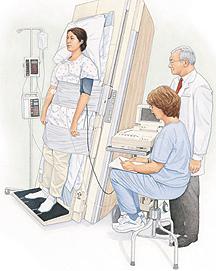Schirmer's test: indications, method of implementation, results
The test method, which will be discussed, is named in honor ofophthalmologist, who developed it, - Otto Schirmer. This sample determines the level of lacrimal fluid, the degree of moisture maintenance of the surface of the cornea.
Indications and contraindications
The Schirmer test is used if there is a suspicion of having:
- inflammation of the cornea of the conjunctiva;
- dry eye syndrome;
- Sjogren's syndrome (a chronic progressive lesion of connective tissue that affects the glands secreting external secretion - salivary and tearful);
- disturbance of tear formation due to taking medications.

The syndrome of "dry eyes" can develop for several reasons:
- Dehydration of the body.
- The patient's elderly age.
- Conjunctivitis or other eye infection.
- Hypovitaminosis A (a deficiency in the body of vitamin A).
- Belmo's eyes.
- Postoperative or permanent complication after laser correction of vision.
- The so-called secondary syndrome, which manifests itself in rheumatoid arthritis, leukemia, and lymphoma.
The test of Schirmer is contraindicated when:
- perforation (change in shape) of the eyeball;
- fistula;
- the developing ulcer of the corneal layer;
- scale erosion of the stratum corneum.
Test methods
The test strips for the Schirmer test are a specialFiltered paper of standard size: 5 mm wide and 35 mm long. Leaving 5 mm from the designated edge of the strip, the ophthalmologist folds it at an angle of 45 degrees and lowers the patient's lower lid, focusing on the area between the outer and middle parts. It is important in the procedure not to touch the cornea.

According to one technique, the patient should close his eyes while performing the procedure, while the other should look ahead and slightly up. Lighting in the office should be comfortable - not dim and not very bright.
The Schirmer test lasts about five minutes. During this time, paper strips absorb tearful pre-corneal film and moisture from the lacrimal lake.
Types of test techniques
The Schirmer test is carried out in two ways:
- Using local anesthesia. The anesthetizing substance excludes the addition of a tear to the basal fluid of the reflective secretion to irritation with paper. After instillation of the anesthetic, the lower arch of the conjunctiva is drained, so that the excess drops of the drug do not mix with the tear fluid, thereby increasing its volume.
- Without using an anesthetic. Such a test by a number of ophthalmologists is considered more accurate, since it completely excludes the mixing of tears and injected drug, shows only a "clean" result. This type of test is characteristic for diagnosing the symptom of a "dry eye".

Also, the Schirmer test is divided into I and II. The first is carried out with the help of test strips according to the technique specified by us. The second type helps to investigate the number of reflex (reactions to stimulus) lacrimal discharge. It is similar, but the ophthalmologist stimulates the secretion of tear secretion by stimulating the nasal passages examined by a cotton swab.
Schirmer's test: the norm and deviations
In severe cases of the syndrome of "dry eyes"indicators on the test strip can be at zero level. The norm for a young contingent of patients are indicators exceeding 15 mm. If the indicators are lower, then the subject suffers from one of the types of the dry eye syndrome:
- 14-9 mm - mild variation of oppression of the secretion of tear secretion;
- 8-4 mm - the average degree of development of the syndrome;
- less than 4 mm - severe forms of the syndrome of dryness of the cornea.
Optimum performance: 10-30 mm. If the patient's age is more than 60 years, then the test strip test below 10 mm will be considered the norm for him, but he should not aspire to zero either.
The norm for the sample II, which determines the volume of excretion of the reflex tear, is not less than 15 mm. Differences in test results for a pair of eyes are considered significant for both types of samples by more than 27%.

Subsequent diagnostics after the Schirmer test:
- inspection on a slit lamp;
- coloring with pink Bengal or fluorescein;
- Research on finding the time interval of rupture of tear film.
The Schirmer test is simple and fast, effectivemethod of initial diagnosis of the syndrome of "dry eyes" and similar manifestations, diseases that affect the secretion of lacrimal secretions. The test helps the ophthalmologist promptly determine the level of lacrimal fluid (basal, reflex) and their total values in the patient being examined.
</ p>




